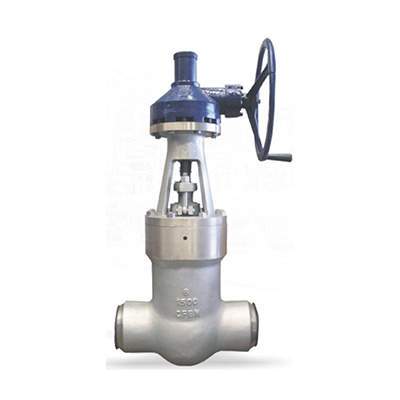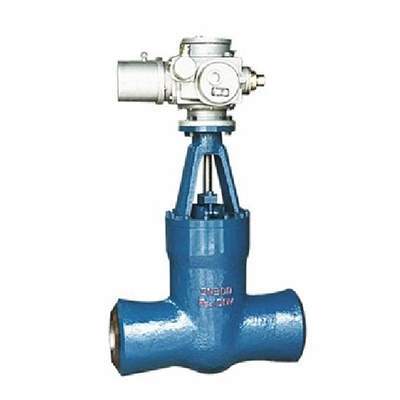Welcome to My Blog!
Before we dive into the content, I’d love for you to join me on my social media platforms where I share more insights, engage with the community, and post updates. Here’s how you can connect with me:
Facebook:https://www.facebook.com/profile.php?id=61563865935136
Now, let’s get started on our journey together. I hope you find the content here insightful, engaging, and valuable.
Introduction

Selecting the right power station valves is critical for ensuring the efficiency, safety, and longevity of power generation systems. These valves regulate the flow of steam, water, and other fluids under high-pressure and high-temperature conditions, making them indispensable in power plants. Fanlei, a leading valve manufacturing company specializing in research, design, production, and sales, offers high-quality valves tailored to meet diverse application needs. This guide explores key factors to consider when choosing power station valves to optimize performance and reliability.
Why Power Station Valves Matter
Power station valves play a pivotal role in maintaining operational stability. They control critical processes, such as steam flow in turbines or cooling water circulation, which directly impact energy output and equipment safety. Poorly selected valves can lead to inefficiencies, costly downtime, or even safety hazards. Understanding their importance helps plant managers make informed decisions to enhance system performance.
Key Features of High-Quality Power Station Valves
Durability and Material Selection
High-quality power station valves must withstand extreme conditions, including high temperatures and corrosive environments. Materials like stainless steel, alloy steel, and advanced ceramics are commonly used to ensure durability. Fanlei’s valves, for instance, are crafted with premium materials to guarantee long-term reliability in demanding applications.
Precision in Flow Control
Valves in power stations require precise flow regulation to maintain optimal pressure and temperature. Advanced designs, such as globe or gate valves, provide accurate control, minimizing energy loss and improving efficiency. Selecting valves with tight tolerances ensures seamless integration into complex systems.
Compliance with Industry Standards
Reputable manufacturers like Fanlei ensure their power station valves comply with international standards, such as ASME, API, and ISO. Compliance guarantees safety, interoperability, and performance, giving plant operators confidence in their equipment.
Types of Power Station Valves

Gate Valves for On/Off Control
Gate valves are widely used in power stations for isolating fluid flow. Their simple design allows for minimal pressure drop, making them ideal for high-pressure steam lines. However, they are less suited for throttling applications.
Globe Valves for Throttling
Globe valves excel in regulating flow and pressure, offering precise control in systems like feedwater lines. Their robust construction makes them suitable for high-temperature environments, though they may cause higher pressure drops compared to gate valves.
Check Valves for Backflow Prevention
Check valves prevent reverse flow, protecting pumps and compressors from damage. They are essential in systems where fluid direction must be strictly controlled, such as cooling water circuits.
Ball Valves for Quick Operation
Ball valves provide fast, reliable shut-off with minimal maintenance. While less common in high-temperature applications, they are used in auxiliary systems within power plants.
Factors to Consider When Selecting Power Station Valves
Operating Conditions
Evaluate the temperature, pressure, and fluid type in your system. For example, superheated steam requires valves with enhanced thermal resistance, while corrosive fluids demand specialized coatings or materials.
Valve Size and Compatibility
Ensure the valve size matches the piping system to avoid flow restrictions or inefficiencies. Compatibility with existing infrastructure reduces installation costs and downtime.
Maintenance and Lifecycle Costs
Low-maintenance valves reduce operational costs over time. Consider designs with accessible components and robust seals to minimize wear and tear. Fanlei’s valves are engineered for extended service life, offering cost-effective solutions.
Comparison of Common Power Station Valve Specifications
| Valve Type | Application | Pressure Rating | Temperature Range | Maintenance Frequency |
|---|---|---|---|---|
| Gate Valve | Steam isolation | Up to 2500 psi | Up to 1200°F | Low |
| Globe Valve | Flow regulation | Up to 2000 psi | Up to 1000°F | Moderate |
| Check Valve | Backflow prevention | Up to 1500 psi | Up to 800°F | Low |
| Ball Valve | Auxiliary systems | Up to 1000 psi | Up to 500°F | Very Low |
This table outlines key specifications to help you match valve types to your power plant’s needs. Always consult with manufacturers like Fanlei to ensure the selected valves meet specific operational requirements.
How to Evaluate Power Station Valve Suppliers
Reputation and Experience
Choose suppliers with a proven track record in the power industry. Fanlei, with its integrated approach to valve manufacturing, has built a reputation for delivering reliable products to global clients.
Customization Capabilities
Power plants often require tailored solutions. Suppliers offering custom designs ensure valves meet unique specifications, improving system compatibility and performance.
After-Sales Support
Reliable after-sales services, including technical support and spare parts availability, are crucial for minimizing downtime. Fanlei provides comprehensive support to ensure seamless valve operation throughout their lifecycle.
Best Practices for Installing and Maintaining Power Station Valves

Proper Installation Techniques
Correct installation prevents leaks and ensures optimal performance. Follow manufacturer guidelines, use appropriate gaskets, and verify alignment with piping systems.
Routine Maintenance Schedules
Regular inspections and maintenance extend valve lifespan. Check for wear, corrosion, or seal degradation, and lubricate moving parts as needed. Fanlei’s durable designs simplify maintenance, reducing operational disruptions.
Training for Plant Operators
Equip your team with knowledge about valve operation and troubleshooting. Well-trained operators can identify issues early, preventing costly repairs.
Environmental and Safety Considerations
Power station valves must comply with environmental regulations to minimize emissions and waste. Additionally, safety features like pressure relief mechanisms protect workers and equipment. Choosing eco-friendly and safe valves aligns with modern sustainability goals and enhances plant reputation.
Conclusion
Selecting the right power station valves involves evaluating materials, types, operating conditions, and supplier reliability. By prioritizing durability, precision, and compliance, you can enhance your power plant’s efficiency and safety. Fanlei’s high-quality valves offer tailored solutions for diverse applications, ensuring long-term performance. Ready to optimize your system? Contact us today to explore our valve solutions and elevate your operations.
FAQ
What are power station valves used for?
Power station valves control the flow of fluids like steam and water in power generation systems, ensuring efficient and safe operation.
How do I choose the right valve type?
Consider your system’s pressure, temperature, and flow requirements. Gate valves suit isolation, while globe valves are ideal for throttling.
Why choose Fanlei for power station valves?
Fanlei offers durable, customizable valves backed by industry expertise and comprehensive support, ensuring reliability for your power plant.
